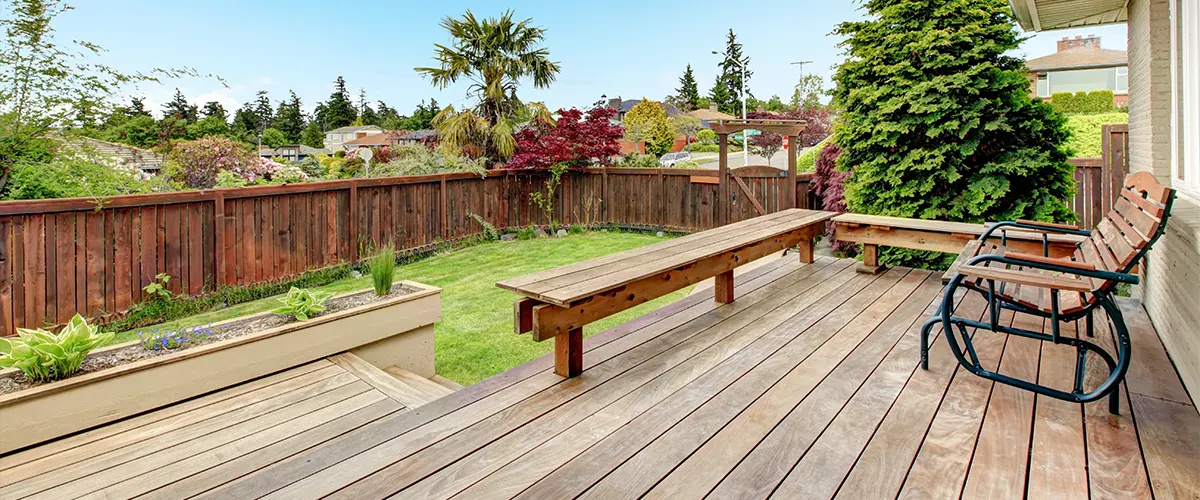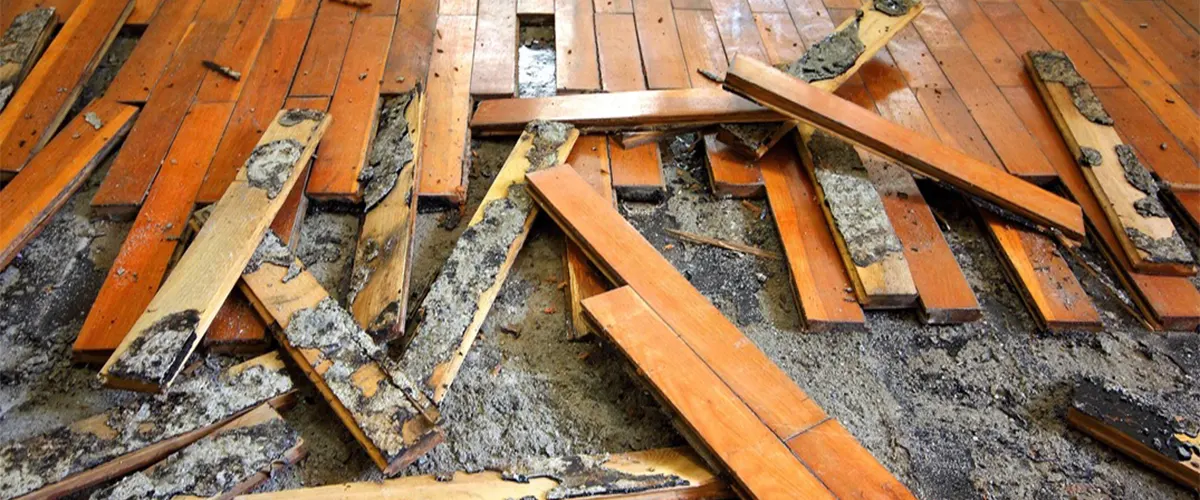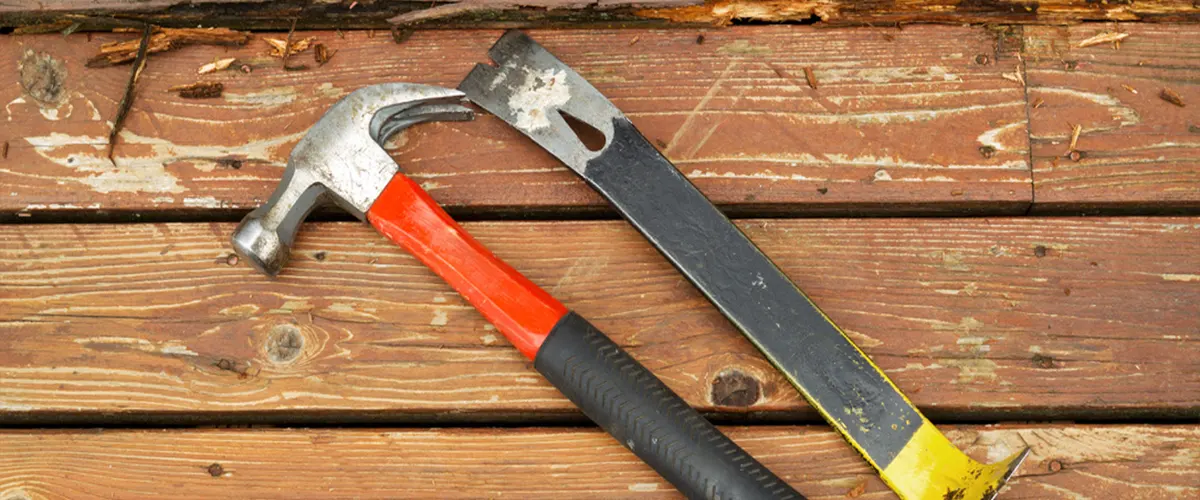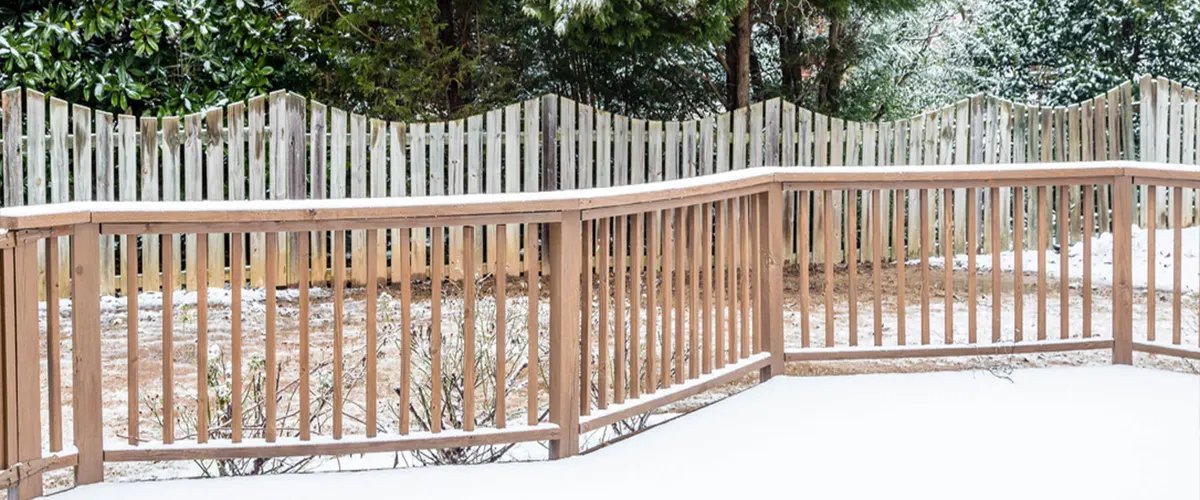If you have a deck, there’s a good chance that you’ve noticed some wood rot in the past. This is especially common near the root of your deck, where water tends to accumulate.
While it may be tempting to just pull out the offending root and call it a day, this isn’t always the best solution.
In this blog post, we’ll tach you everything about deck wood rot repair – how to fix this issue and prevent your wood deck from rotting in the future.

Table of Contents
What Is Wood Rot And How Can It Damage Your Deck
Wood root is a type of fungus that can grow in wet environments. Left untreated, wood root can cause serious damage to your deck. The fungus can eat away at the wood, eventually leading to structural failure. It’s therefore important to take steps to repair any damage caused by wood root as soon as possible.
Act as quickly as possible once you spot wood rot on your deck. If we’re called out to deal with the issue, we’ll inject a special preservative into your timber and then seal it up with a clear stain. Alternatively, you could try removing the fungus yourself by cutting away at the root, although this may leave some unsightly damage.
How To Identify Wood Rot
The easiest way to tell if your deck has wood rot is to look for signs of moisture accumulation and/or discoloration. If you notice any of these symptoms, it’s likely that you have wood rot and will need to take corrective action.
You may also notice white, powdery looking growth around the deck’s base. You can test this for yourself by wiping away part of the fungus and exposing the wood underneath – if you find moist wood beneath the surface, then it’s likely that you’re dealing with a serious rot problem.

Signs To Look For
There are different types of rot, each with their own distinguishable features. The most common types are:
- Brown rot - Brown rot can often be identified by the presence of water spots on your deck's surface. It may also produce a musty odor and give off dark streaks when exposed to sunlight.
- White rot - White rot is a type of fungus that typically affects the structural integrity of wood. It can often be identified by the presence of white, powdery-looking growth on the surface of the wood.
- Soft rot - Soft rot usually forms in places that are either too hot or too cold. This type of rot is the most uncommon but the decomposition occurs slower than the other to types, starting from the interior of the wood.
How You Know If The Rot Has Spread To Other Areas
If you’re not sure whether or not your wood rot has spread elsewhere, you can follow these steps to determine if your deck needs further inspection.
Use a putty knife to scrape off the top layer of rotted wood in an affected area, exposing the surface beneath. Inspect the exposed wood for moisture and visible fungus. If there is no sign of water, then you may need to call in a professional deck inspector to help pinpoint any hidden rot that may be damaging the wood.

Ways To Stop Your Deck From Rotting
This is how you can prevent rot in the future:
- Combine the enzyme cleaner with chlorine bleach to make a stronger cleaning solution - this will help break down any mould or fungus that may be hiding on your deck's surface.
- Rinse the wood thoroughly once you've removed all traces of fungus - do not allow it to dry
- After cleaning, apply a coat of preservative and let it soak in before adding a top-coat.
What To Do If Your Decks Has Already Been Damaged
If your deck has been weakened by rot, there are a number of steps you can take to tackle deck wood rot repair. You’ll first need to cut away the infected wood. It’s important that you thoroughly clean the area where rotting has occurred before treating – this will help prevent further damage during repairs.
Once you’ve removed all traces of rot from your damaged area, carefully treat any remaining healthy wood with preservatives before filling in the gaps with an epoxy filler or a polyester filler
You’ll then need to sand the wood until it’s smooth before applying a stain or paint
How To Prevent Your Deck From Rotting In Winter
You can stop your deck from rotting in winter by following these steps:
Before winter hits, apply a coat of preservative to the deck’s surface. Reapply every few months to make sure that your deck is completely protected against fungus and other rot-causing agents.

DIY Vs Professional Assistance
There are a few things you can do to try and fix the damage yourself, but in some cases it may be necessary to call in a professional.
If the rot has only affected a small area, you may be able to cut away the rotted or damaged wood and treat any remaining healthy wood. If the rot has spread, however, you’ll need to remove all traces of it and rebuild the damaged area, which may require professional assistance.
Whatever you decide, make sure you act immediately as wood rot tends to spread quickly and become a real problem if not treated.
Cost Of Deck Wood Rot Repair
Depending on the extent of the damage, deck wood rot repair can cost anywhere from a few hundred dollars to a few thousand dollars, and you will be able to fix the problem yourself.
If the rot has spread, however, you’ll need to remove all traces of it and rebuild the damaged area, which may require professional assistance.
Deck Wood rot repair FAQs
Fixing rotten wood without replacing it involves a few steps. First, you’ll need to remove the decayed and soft parts of the wood using tools like chisels, screwdrivers, or a rotary tool.
Once the decayed wood is removed, you can treat the remaining sound wood with a wood hardener or consolidant.
After that, you can fill in the voids with an epoxy-based wood filler. Sand the repaired area to match the surrounding wood, and finish with paint, stain, or a protective sealant.
Yes, rotten wood can be restored to a certain extent.
If caught early, you can remove the decayed portions, treat the remaining wood, and fill in the gaps to restore both the appearance and structural integrity.
However, if the rot has progressed significantly or compromised the wood’s strength, it’s advisable to consult a professional to assess whether restoration is feasible or if replacement is necessary.
Epoxy-based wood fillers are often considered the best choice for repairing rotted wood.
These fillers are durable, water-resistant, and adhere well to wood surfaces. They can be molded to fit various shapes and sizes, and they can be sanded and painted once cured.
Make sure to choose a high-quality epoxy filler specifically designed for wood restoration for optimal results.
Dry rot can be repaired, but it requires thorough removal of the affected wood and treatment to prevent further spread.
Start by cutting out and removing all the dry rotted wood until you reach sound, healthy wood. Treat the remaining wood and the surrounding area with a fungicide to eliminate any remaining spores.
After the treatment, you can use epoxy-based fillers to rebuild the damaged sections. Keep in mind that repairing dry rot is a complex process and may require professional expertise for comprehensive restoration.
Conclusion
Rotting wood in your deck can be a serious issue that will lead to structural damage and an unsightly appearance.
If you’re worried about the condition of your own deck, we recommend having it inspected by a professional as soon as possible so they can provide recommendations on deck wood rot repair.
We hope this article has been helpful for fixing wood rot in your deck! For more information or help on repairing wood rot or preventing future issues, contact us today.
